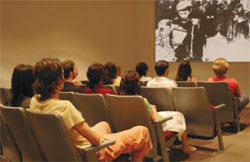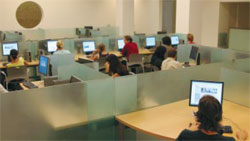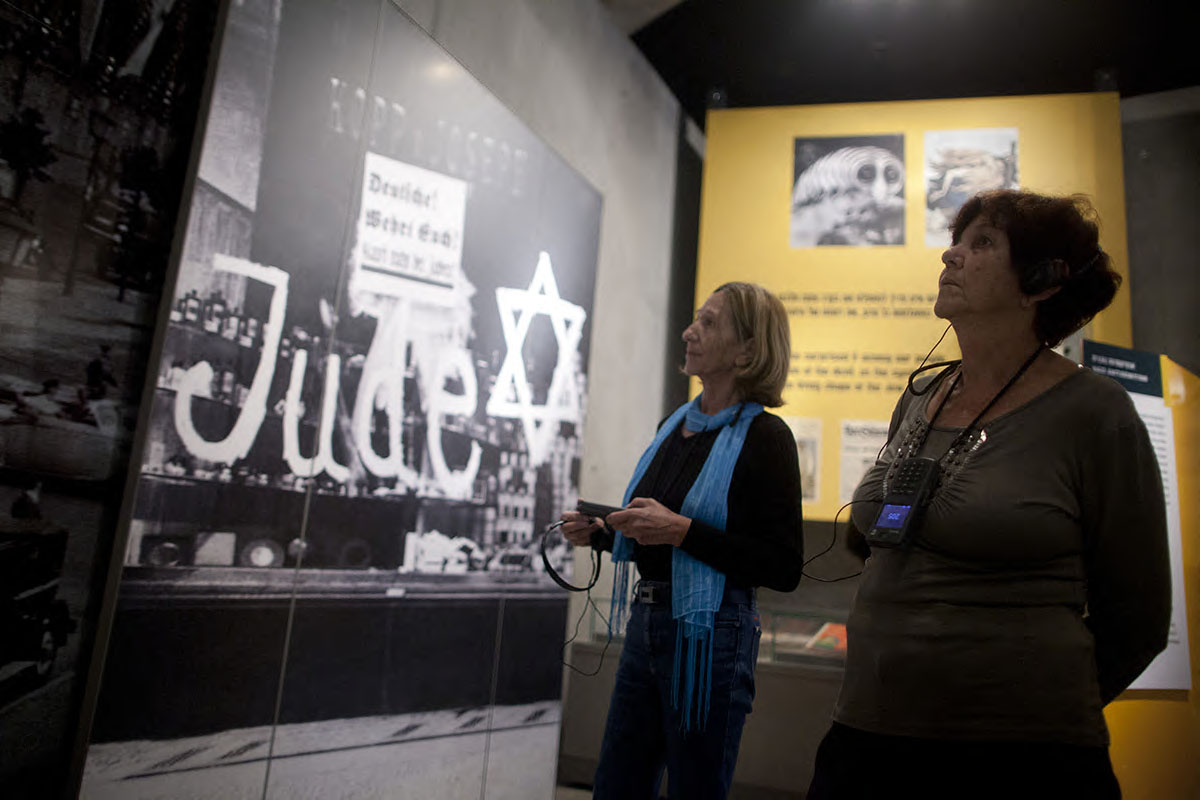
The Visual Center: World resource center for cinematic works related to the Holocaust

The Visual Center: World resource center for cinematic works related to the Holocaust
Sunday to Thursday: 09:00-17:00
Fridays and Holiday eves: 09:00-14:00
Yad Vashem is closed on Saturdays and all Jewish Holidays.
Entrance to the Holocaust History Museum is not permitted for children under the age of 10. Babies in strollers or carriers will not be permitted to enter.

The Visual Center: World resource center for cinematic works related to the Holocaust

The Visual Center: World resource center for cinematic works related to the Holocaust
Since the beginning of the twentieth century, film has evolved into the primary medium through which we learn about the world and through which we form our perceptions about personalities, places and events. Films—whether they are feature length, documentaries, shorts, un-cut testimonies or home videos, and whether they are viewed in theaters, on television sets or on computer terminals—have made a tremendous impact on both our understanding of and our perceptions about the Holocaust. No one who has seen Steven Spielberg’s Schindler’s List, with its portrayal of Amon Goeth randomly shooting Jews in the Plaszow camp, will ever shake that picture of Nazi brutality. The heroism and determination of some Holocaust survivors is palpable in Exodus, while the desperation of others is evoked deeply by Rod Steiger in The Pawnbroker. Images like these both haunt and inform us.
It is only fitting, therefore, that as part of the museum complex inaugurated in 2005, Yad Vashem established a Visual Center for the collection, study and viewing of films about the Holocaust and related subjects. The construction of the Visual Center was made possible through the generosity of the Steven Spielberg Righteous Persons Foundation, and the Steinmetz family. Liat Benhabib is the Director of the Visual Center, which is under the auspices of the Yad Vashem Library.
Chairman of the Yad Vashem Directorate Avner Shalev explains: “The Visual Center is dedicated to making its collection of films about the Holocaust as comprehensive as possible, so that it may be referred to as the Jewish People’s chief repository for films about the Holocaust. The primary objective of the Visual Center is to create the leading portal through which scholars, students, filmmakers and the general public can view and access information about Holocaust films.”
The collection comprises films acquired for viewing and research over the years by Yad Vashem. The Visual Center is engaged not only in collecting additional films and solving related copyright issues, but also in developing its database of detailed information about all films produced about the Holocaust, as well as survivor testimonies. Thousands of films have been catalogued in the Visual Center’s database, and more than half of these titles are currently available for viewing on the premises. All of the 52,000 survivor testimonies recorded by the USC Shoah Foundation Institute are also available for viewing, as well as approximately 10,000 Yad Vashem survivor testimonies.
Visual Center visitors may view films at the click of a mouse at one of 50 personal computer stations, either by selecting one of the more popular titles suggested by the Visual Center’s staff or by searching the database for films by genre, subject or more specific criteria. Group screenings of films from the Visual Center collection take place at the Center in a specially designed theater in conjunction with academic and educational conferences and symposia on Holocaust and Cinema.
The “Avner Shalev –Yad Vashem Chairman’s Award for Artistic Achievement in Holocaust-related Film” has been granted every July since 2006 by the Visual Center at the International Film Festival at the Jerusalem Cinematheque. Leon and Michaela Constantiner endow the award.
International productions of films about the Holocaust reached a peak in 2008, and will, most likely, continue at a similar pace in the near future. “We call upon filmmakers and distributors everywhere to help us acquire films and grant us the rights to make them available for public viewing,” says Visual Center Director Liat Benhabib. “Films are made to be seen. By depositing a film in the Visual Center, a director gives audiences access to this film, and with that the possibility to absorb its message. Visual Center visitors who wish to acquire a copy of the film can contact the filmmaker by means of contact details catalogued in our database. In this way, the Visual Center serves as a “distribution point” for films, enabling them to enhance our understanding of the Holocaust, its causes and its repercussions.”
The writer is the Director of the Yad Vashem Libraries

Thank you for registering to receive information from Yad Vashem.
You will receive periodic updates regarding recent events, publications and new initiatives.

"The work of Yad Vashem is critical and necessary to remind the world of the consequences of hate"
Paul Daly
#GivingTuesday
Donate to Educate Against Hate


Worldwide antisemitism is on the rise.
At Yad Vashem, we strive to make the world a better place by combating antisemitism through teacher training, international lectures and workshops and online courses.
We need you to partner with us in this vital mission to #EducateAgainstHate
The good news:
The Yad Vashem website had recently undergone a major upgrade!
The less good news:
The page you are looking for has apparently been moved.
We are therefore redirecting you to what we hope will be a useful landing page.
For any questions/clarifications/problems, please contact: webmaster@yadvashem.org.il
Press the X button to continue



